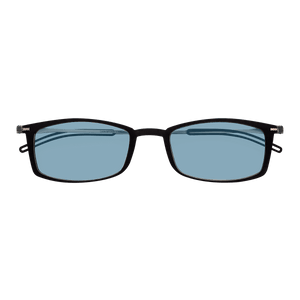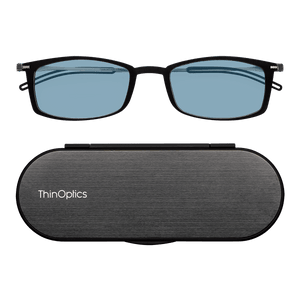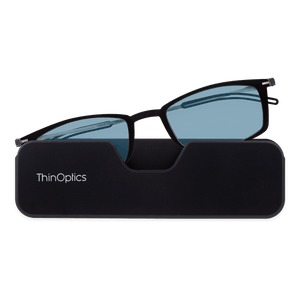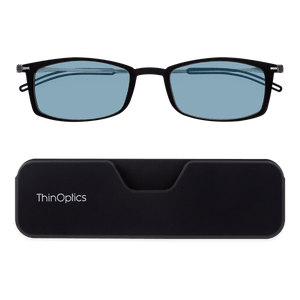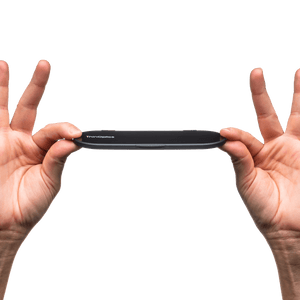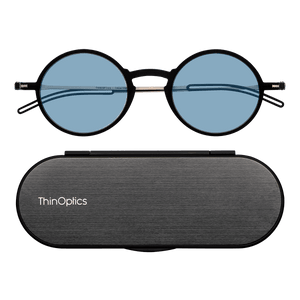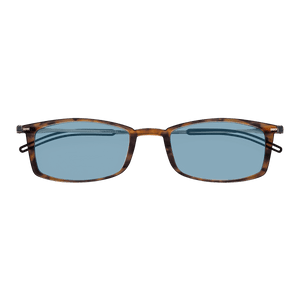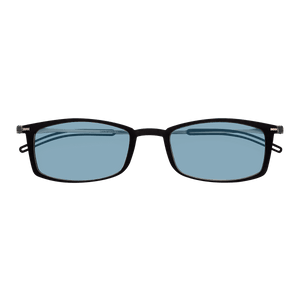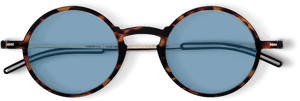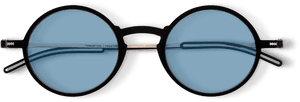How to Protect Your Eyes from Harmful Blue Light

Working with Prolonged Blue Light Exposure
Did you know that 43% of American adults have a job that requires the prolonged use (5+ hours/day) of a tablet or computer? In the digital age, this statistic makes sense – but what underlies the prolonged use of blue-light-emitting-electronic devices is much more significant.
Of those 43% of adults with a job that requires the prolonged use of a tablet or computer, over 70% of them report symptoms of digital eye strain. This figure gets even more alarming when you consider that 93% of American teenagers, the next generation of adults with a job, have access to or have a computer.
In short, this bombardment of artificial blue light on our eyes is a fairly recent phenomenon, but we’ve already begun to see the harmful effects of it on our eyesight.

What is Blue Light?
All light exists in wavelengths. Different wavelengths produce different colors. Some wavelengths are not visible to the naked eye, while others are. The wavelengths that are visible to the naked eye form colors that exist in the “visible spectrum”. Those wavelengths that are outside of the visible spectrum are invisible to the naked eye and include ultraviolet and infrared light.
To be perceived as different colors, wavelengths exist in different intensities. Blue light waves are some of the shortest and highest intensity wavelengths in the visible spectrum. Our sun produces an abundance of natural blue light, which is the reason why we perceive our sky to be blue. These short, high intensity blue wavelengths collide with air molecules, which causes the blue light to scatter and makes the sky blue.
But beginning in the 1980’s with the emergence of the information age and the digital revolution, we’ve steadily become inundated with artificial sources of blue light such as LED lighting, fluorescent lighting, LCD and LED screens found in our phones, computers, e-readers, digital gaming devices, laptops & televisions.

Why Blue Light is Bad for Your Eyes
Artificial blue light is replicating the short, high intensity wavelengths needed to create the color blue. And since these waves are so short and full of energy, they tend to flicker more easily than longer and weaker wavelengths. This flickering creates a glare that affects sharpness, contrast & clarity while contributing to aggravating factors like eye strain and headaches.If you’re one of the 43% of Americans with a job that requires the prolonged use of a blue-light-emitting-electronic device, you might be at risk of more than just eye strain and headaches. This level of blue light exposure has been linked to other complaints like insomnia, visual fatigue, difficulty concentrating and an increased risk of age-related macular degeneration.

Why Should I Protect My Eyes from Blue Light Exposure?
For one, it’s really easy to protect your eyes from excessive exposure to artificial blue light. Beyond that, excessive blue light exposure can damage your retina, which could lead to blindness. The short, high-intensity waves of blue light travel through to your retina, which could also increase your risk of cataracts.
Luckily, something as simple as blue light blocking reading glasses can help prevent this.

How do Blue Light Blocking Glasses Work?
ThinOptics Blue Light Blocking Glasses are imbued with a mild yellow filter to block blue light. This filter also serves to reduce the glare caused by the high frequency blue light waves. Steady use of blue light blocking glasses can relieve visual fatigue, improve your sleep and reduce your risk of age-related macular degeneration and other vision problems.
Let’s face it, our electronic devices are here to stay – so it’s important to take the necessary precautions to protect your eyes from a constant bombardment of artificial blue light.

How Else Can I Reduce Eye Strain from Excessive Blue Light Exposure?
While blue light blocking glasses are the quickest way to reduce your eye strain from excessive blue light exposure, here are a few more tips you can use to care for your eyes while working with blue-light emitting devices:- Take frequent breaks
- Set a timer on your phone for every 20 minutes. Take five minutes to get up and walk around. Make sure you’re not looking at your phone during this break! Head outside into the sunlight if possible.
- Ensure proper line of sight with your electronic devices
- This tip will not only help your eyes, but also your posture! Make sure that you’re not looking up or down at your monitor. The angle at which you’re viewing your screen may produce even more glare as a result of how the emitted blue light reacts with any other light source that may be reflecting off of your monitor
- Use blue light filters on your devices
- Many electronic devices have a “night shift” or “blue light filter” setting. Activating these settings will give your screens a warmer hue, reducing the amount of blue light that is being emitted.
- Blink!
- Jobs that require prolonged use of electronic devices can sometimes be monotonous, which is why it’s so important to remember to blink. Blinking cleans the surface of your eyes from debris while flushing fresh tears over their surfaces. Blinks bring nutrients to your eyes’ surface structures, maintaining their overall health.
- Clean your screen
- Any smudges or glares that aren’t coming from the emission of blue light will only serve to further strain your vision as your eyes struggle to focus. Do your eyes a favor and clean your screens & monitors at least once a week. Most monitors & screens respond well to a simple microfiber cloth lightly moistened with distilled water.

Following these tips is a great way to ensure that you’re caring for your eyes and vision in the best way possible. Shop our Blue Light Blocking Glasses for the world’s thinnest & lightest reading glasses in the world’s most convenient & durable cases!

